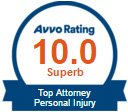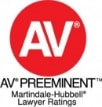A motor vehicle accident can have a life-altering impact on those involved, especially if injured. Trying to deal with painful injuries, get vehicle repairs, and cover medical expenses can seem nearly impossible.
After an accident, it is essential to know that victims can take legal action to recover compensation to help ease some of these financial burdens. However, for car crash victims in Colorado, understanding how fault is determined is essential, as it plays a significant role in insurance claims and compensation.
Our Denver car accident attorney at Levine Law is here to explain the process of determining fault in a car accident in Colorado.
Importance of Determining Fault in a Car Accident
Determining fault in a car accident is crucial for several reasons. It directly influences who will be responsible for damages and medical expenses, significantly impacting insurance claims and compensation.
Additionally, understanding fault is key to building a strong legal case if you seek compensation through a lawsuit.
Understanding Colorado’s Comparative Negligence Law
Colorado follows a “comparative negligence” system, which means that fault can be shared among multiple parties. Comparative negligence is a legal principle that apportions responsibility among the involved parties in an accident.
In Colorado, each party’s responsibility for the accident is evaluated and assigned a percentage. For example, one driver might be found 70% at fault while the other is 30% responsible.
Fault distribution is determined by considering various factors, including the actions of each driver and any evidence collected. If you are deemed partially responsible, your compensation will be proportionately reduced based on your degree of fault.
Colorado’s 50% rule states that if you are found to be 50% or more at fault for the accident, you cannot recover compensation from the other party. This rule underscores the importance of accurately determining fault, as it can make the difference between receiving compensation and walking away empty-handed.
Common Factors Used to Determine Fault
Several key factors are used to determine fault in a car accident:
- Police Reports: One of the first steps in determining fault is the police report. Law enforcement officers who arrive at the scene will investigate the accident, interview witnesses, and document their findings. These reports often include the officer’s opinion on who was at fault, which can significantly influence fault determination.
- Witness Statements: Eyewitness accounts play a crucial role in establishing fault. Witnesses can provide an unbiased perspective on how the accident occurred, supporting or challenging the claims made by the involved parties. Collecting witness statements can strengthen your case and provide valuable evidence.
- Traffic Laws and Violations: Traffic laws are fundamental in determining fault. Violations such as speeding, running a red light, texting while driving, or failing to yield can clearly establish fault. Understanding these laws and how they apply to your accident can be pivotal in building your case.
- Accident Reconstruction: In complex cases, accident reconstruction experts may be called upon to analyze evidence and recreate the accident. These professionals use various tools and methodologies to determine how the accident occurred and who was at fault. Their findings can be critical in proving your case.
The Role of Insurance Companies in Determining Fault
Insurance companies play a significant role in fault determination. Adjusters will investigate the accident, review police reports, and assess any evidence provided. Their goal is to determine the extent of each party’s liability and calculate the compensation accordingly.
Negotiating fault involves discussions between the insurance companies of the involved parties. Each side presents its findings and argues its case. This process can be lengthy and may require legal intervention if disputes arise.
Disputes over fault are common, and resolving them can be challenging. If the parties cannot agree, the case may be taken to court, where a judge or jury will ultimately decide. Having an experienced Denver car accident attorney on your side can be invaluable in these situations.
Steps to Take After an Accident to Protect Your Rights
Taking the right steps after an accident is essential for protecting your rights:
- Gather Evidence: Collecting evidence at the scene is crucial. Take photos and videos of the accident, including vehicle damage, road conditions, and visible injuries. This evidence can support your claim and help establish fault.
- Obtain Medical Records: Medical documentation is essential in proving the extent of your injuries and their impact on your life. Keep all medical records, bills, and any related documents. These will be vital in supporting your claim for compensation.
- Consult with an Attorney: Seeking legal counsel can make a significant difference in the outcome of your case. A skilled auto accident lawyer in Denver will guide you through the process, help gather evidence, and advocate. Our Denver car wreck attorney at Levine Law is dedicated to helping you determine fault and secure the compensation you deserve.
Scenarios of Fault Determination in Colorado
Different types of accidents present unique challenges in fault determination:
- Rear-End Collisions: In rear-end collisions, the driver who hits the vehicle in front is typically assumed to be at fault. However, there can be exceptions, such as if the front driver suddenly stopped without warning or if their brake lights were not functioning.
- Intersection Accidents: Intersection accidents often involve multiple vehicles and can be complex. Fault is determined by analyzing traffic signals, right-of-way rules, and each driver’s actions. Eyewitness accounts and traffic camera footage can be particularly useful in these cases.
- Multi-Vehicle Pile-Ups: Multi-vehicle pile-ups present a unique challenge in fault determination. Each driver’s actions must be analyzed to understand how the chain reaction occurred. Accident reconstruction experts may be necessary to unravel these complex incidents.
Potential Challenges in Fault Determination
Determining fault in a car accident can be challenging, particularly in the following situations:
- Disputed Fault: If the other party contests fault, it can complicate the resolution process. In such cases, having solid evidence and legal representation is crucial. An experienced attorney can help negotiate or litigate to prove your case.
- Partial Fault: Being partially at fault can affect your compensation. Under Colorado’s comparative negligence law, your compensation is reduced by your percentage of fault. Understanding this concept is essential in managing expectations and building a strong case.
- Uninsured or Underinsured Drivers: Accidents involving uninsured or underinsured drivers can complicate fault determination and compensation. In these situations, you may need insurance coverage, such as uninsured motorist coverage, to recover damages.
Contact Our Denver Car Accident Attorney
Determining fault in a car accident is a complex but crucial process directly impacting your ability to secure compensation. By understanding Colorado’s comparative negligence law and taking proactive steps to gather evidence, you can protect your rights and build a strong case.
If you’ve been injured in an automobile accident due to another driver’s negligence, contact our Denver car wreck attorney at Levine Law for a free consultation. Our experienced team, including our car accident lawyer in Denver, is here to guide you through the process and help you achieve the justice and compensation you deserve.
















